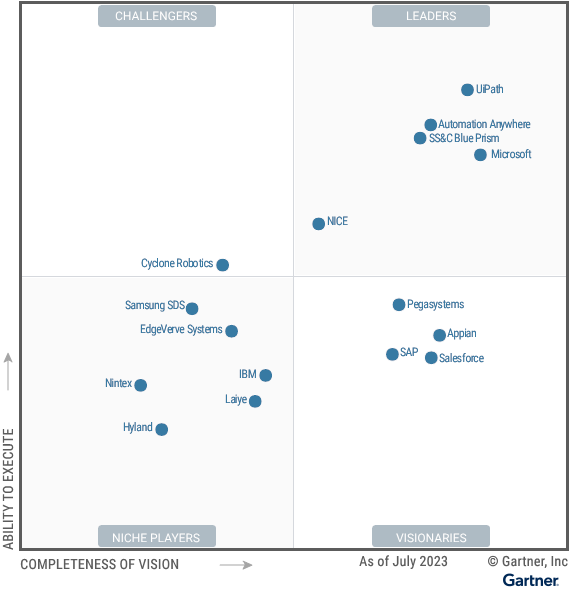Gartner has released the Magic Quadrant for Robotic Process Automation (RPA) for 2023.
Here are some of our thoughts on the key trends that you need to know:
• RPA has evolved from a desktop automation tool to an entire automation platform that includes multiple technologies such as RPA, Artificial Intelligence (AI), Natural Language Processing (NLP), Application Programming Interface (API) automation, process orchestration, low-code application development, task and process mining, Intelligent Document Processing (IDP), and application testing. Nevertheless, we believe that most organizations are still predominately focusing on RPA use cases, and are merely scratching the surface with regards to adopting the broader automation platform.
• Increasing popularity of API automation given the proliferation of SaaS applications. API automation tends to be simpler and more robust when automating such applications as compared to traditional UI-based approaches.
• Cloud-first automation platforms are gaining traction as these are simpler to deploy and adopt.
• No single vendor is currently dominating the hyperautomation space given the disparate technologies involved. Consequently, many organizations are adopting a “best-of-breed” approach, mixing and matching products from different vendors. Therefore, when evaluating vendors, it is increasingly important to consider the openness and interoperability of the vendor’s technology to prevent vendor lock-in.
• Generative AI is breathing a new lease of life to the fast-moderating RPA market, unlocking many AI-generated automation use cases which were previously not feasible. The ability to handle unstructured data and process natural languages are two such examples.
For the record, the leaders in the 2023 Magic Quadrant are Automation Anywhere, Microsoft, Nice, SS&C Blue Prism and UiPath (in alphabetical order).
